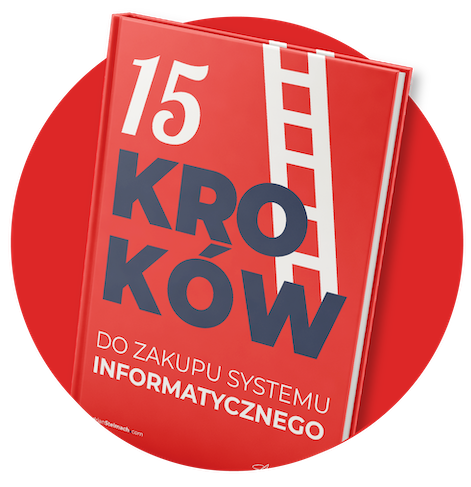
NEWSLETTER
Wpisz swój adres e-mail i zyskaj e-booka
Bez niechcianej poczty ani reklam
Tylko merytoryczne treści z obszaru digitalizacji produkcji

Lean Management is sometimes seen as a set of tools – boards, reports, working methods. But they are not the ones that determine the success of the transformation. The most important thing is the people, because they are the ones operating the machines, using the systems and making hundreds of micro-decisions every day.
When a new standard, software or reorganization enters a factory, for management it’s a strategic project. For employees – a sudden intrusion into the daily rhythm. If we don’t explain why the change makes sense, people will quickly perceive it as a threat. And where there is a sense of threat, natural resistance is born.

Imagine that your company decides to completely switch from Microsoft to Google. The project takes six months, involves specialists, dozens of analyses and schedules are created. But the employees only learn about everything at the “in-service” training. What do they see? Another technical lesson without context. What don’t they see? Answers to the questions: “why are we doing this?”, “how does this affect my work?”, “what do I gain?”.
Failure to talk about the purpose of the change puts the entire organization up against the wall instead of moving forward. Resistance occurs not because people don’t want to work better, but because no one has explained to them what lies behind the decision.
According to many managers, the easiest way to communicate a change is…to send an email to everyone. On the one hand, it’s tempting – one click and the whole company has the message in its inbox. The problem is that an email is no substitute for a conversation. It’s a dry message, devoid of emotion and the opportunity to ask questions.
Change in a factory needs the face and voice of a leader. People need to see that someone got in front of the team, took responsibility and clearly explained intentions. Only then can the email act as a follow-up – a reminder and a summary. Reversing this order is a straight road to misunderstanding.

Lean management and lean manufacturing share a common goal: process improvement. But even the best tools won’t work without employee understanding.
A good example is the implementation of a machine monitoring system at one of the plants. New operator panels were installed on the shop floor. The next day two of them were… broken.
Why? Because the second shift did not know what the devices were and why they appeared. Faced with the unexpected change, employees reacted defensively. This event became a warning for years: lack of communication breeds fear, and fear quickly turns into resistance – including physical resistance.
One of the simplest methods to support lean management is Kurt Lewin’s model. This psychologist decades ago described the change management process in three steps: thaw, change, freeze.
It’s like hardening steel: heating too long leads to chaos, cooling too fast leads to cracks. The rhythm of implementation determines whether lean management will have lasting effects. The change must last long enough for people to understand it, but not drag on indefinitely.

Get 5 chapters of the book for free!
Join the newsletter and gain access to 40% of the book
“15 Steps to Buying an Information System“.
Every company needs to grow – the decision to introduce a new standard is non-negotiable. But the way we talk to people about this decision makes a huge difference.
Your employees need simple answers to four questions:
Without this, the employees themselves add the missing threads (usually not very optimistic).
Every manager knows how quickly rumors spread in an establishment. If we don’t provide people with a space to talk, they will create their own narrative about the change. That’s why a leader’s best tool is a workshop.
These are short, well-planned meetings where you can lower tensions within the team, listen to concerns and show implementation details. The best place to hold them is the gemba – the production hall, where the change actually happens. This ensures that the conversation is not disconnected from reality, and that employees see that their perspective matters.
Sometimes a message alone, however well prepared, is not enough. An example? When a company moves a plant 30-40 kilometers away, the mere promise “it will be better” is not enough. Only a joint tour of the new hall, showing the plans and walking through the future offices make the employees get used to the change.
It’s not about getting employees to sign off on the decision – that one was made anyway. It’s about showing respect: “you can see where you will be working, ask questions, get used to the new place.”
From the experience of many plants, three mistakes are repeated most often:
Each of these mistakes leads to the same thing: resistance, declining confidence and wasted potential for change.

Wanting to avoid mistakes, it is advisable to use a simple communication map:
Such a plan gives people a sense of security and organizes the process.
Lean management is not a collection of tools, but the art of working with people. Boards and reports can help, an MES system can support – but they are not the ones that will carry out the change. You will see the biggest effect when you, as a manager, go out to the team, explain the “why” and turn resistance into a willingness to act.
Because any transformation in manufacturing is not an exam in technology, but a test of communication. And if a leader builds a bridge between what management plans and what happens at the machine, change will not only take off, it will become a reality.